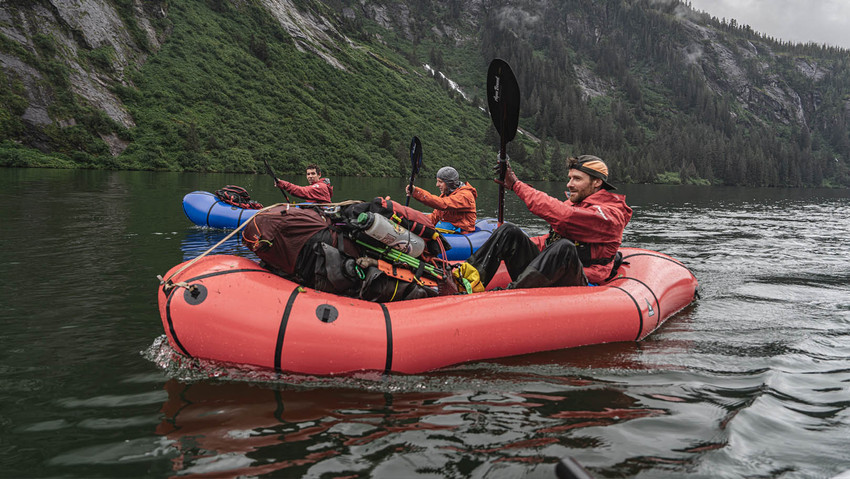Remote Ropes’ Waldo Etherington Never Leaves Home Without His Silky
Whether he’s Alaska-bound or spending months deep in a dense jungle, Waldo Etherington, founder of Remote Ropes, says when it comes to his Silky saw, he doesn’t leave home without it!
Over the past 10 years, Waldo Etherington, a tree- and big wall-climbing professional who leads safety and rigging on conservation projects, movie productions, and everything in between, has become the go-to in the UK and Europe for safety on high. When David Attenborough or Will Smith wants to work in the wilderness, they call Etherington!
“I started climbing trees straight out of school when I was 16 or 17,” said Etherington. “I wanted to work in rainforests and be an explorer as early as I can remember.”
At 17, he completed his first tree climbing and rigging course with Canopy Access and became an arborist to raise money to volunteer on research and conservation expeditions worldwide. A year later, he was a junior instructor with the company.
“As an arborist, I quickly discovered Silky,” said Etherington. “Back then it was the sharpest, best, most precise saw available, and it still is.”
Etherington was assigned his first solo tree surgery job before he had his chainsaw license. His boss sent him to dismantle an ash tree. “I limbed the tree with a Silky and took the whole thing down except the stem,” said Etherington. “When my boss showed up, he shook his head that I had done the job with a hand saw. Needless to say, I got proficient with Silkys quickly.”
On rainforest expeditions, Etherington never leaves his tent without a Silky, which he uses for brush cutting and more. “When I started working with remote tribal communities, people were blown away by the power of Silky saws. Their eyes would get big and they’d ask, ‘What’s that?’ So I started leaving Silkys behind in places where I worked. My Silky is my most prized possession on an expedition. I started taking two to three on each trip to give them away.”
Etherington’s Silky stories are endless. In Panama, he cleared 10 trees blocking a road with his Gomboy when the chainsaw broke. In Chile, he rebuilt parts of a road with his Silky in search of the country’s biggest Alerce tree. In Alaska, guiding climbers Alex Honnold and Tommy Caldwell to the base of Devil’s Thumb for the first-ever single-day traverse of all five peaks of Alaska’s Devil’s Thumb massif, he led eleven climbers and filmmakers from the beach where they were dropped off into a lowland temperate forest filled with bears and spiky devil’s club to get to the cliff.
“It was proper thick, cliffy, steep terrain with loose rocks,” recalled Etherington. “The story producer fell off a cliff–luckily she landed on a ledge. Then we packrafted across a lake and had another bushwhack. I was in the lead, and I had a Silky in one hand and a machete in the other. We tunneled through the thickest bush I’ve encountered anywhere. It was a three-day epic to get to Devil’s Thumb. I have done a lot of bushwhacking, and I can confidently say that if I hadn’t had my Silky, we’d still be out there.”
Etherington’s arsenal includes a Pocketboy for camp craft, a big-tooth Gomtaro 270 sheathed saw for tree work, and a Gomboy 270 for general tasks.
These days when Etherington isn’t long lining someone into a waterfall, orchestrating extreme helicopter maneuvers, or checking off gnarly speed ascents with his climbing partner and mentor Leo Houlding, he’s refining his lightweight jungle kit and queuing up the next conservation project.
Etherington’s most recent film project, Lamo Auru, is about climbing trees with a tribe in Papua New Guinea. Part adventure and part conservation, the film is about the plight of rainforests and the importance of protecting the ancient forests we have left.
For Etherington’s next project, he’ll return to New Britain, Papua New Guinea for the “How to Save a Forest” project. He’ll take two scientists, link up with a local university, and launch a long-format community-led conservation project.
“We plan to cross the Nakani Mountains and conduct research to bolster that area’s UNESCO status,” said Etherington. “New Britain might be the most biodiverse rainforest on the planet. It has insane endemism, including tree-climbing kangaroo-like megafauna that has never been recorded. We hope to gather enough biological research to get the area recognized as a World Heritage Site. Then we’ll partner with a local community to build a research station and set them up with tree climbing equipment. ”
Follow Etherington’s adventures @waldo_etherington.

